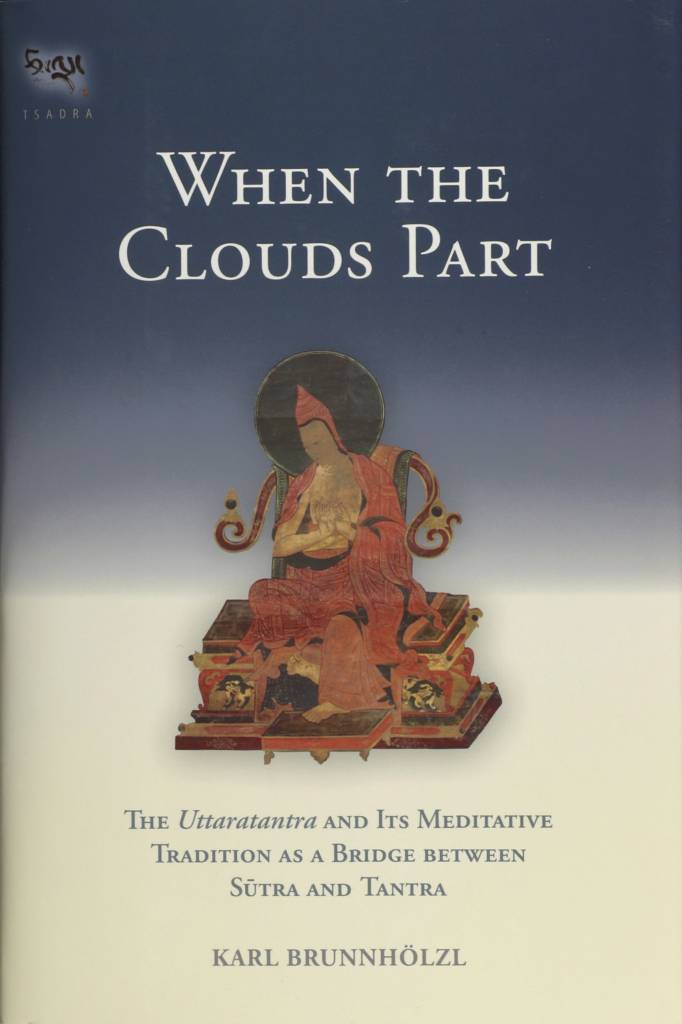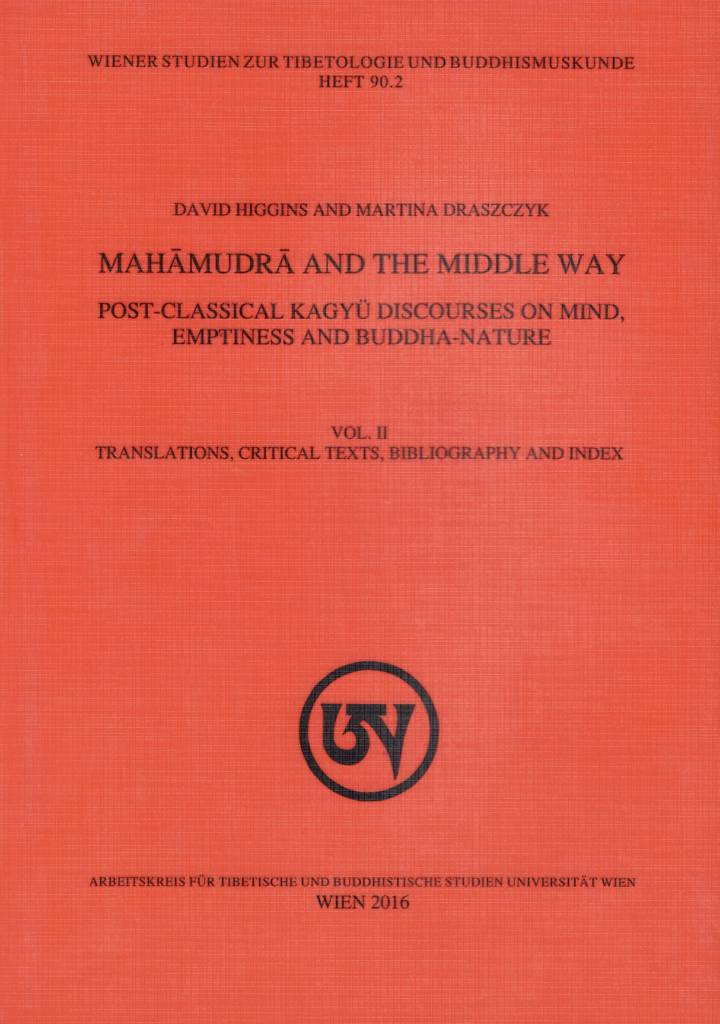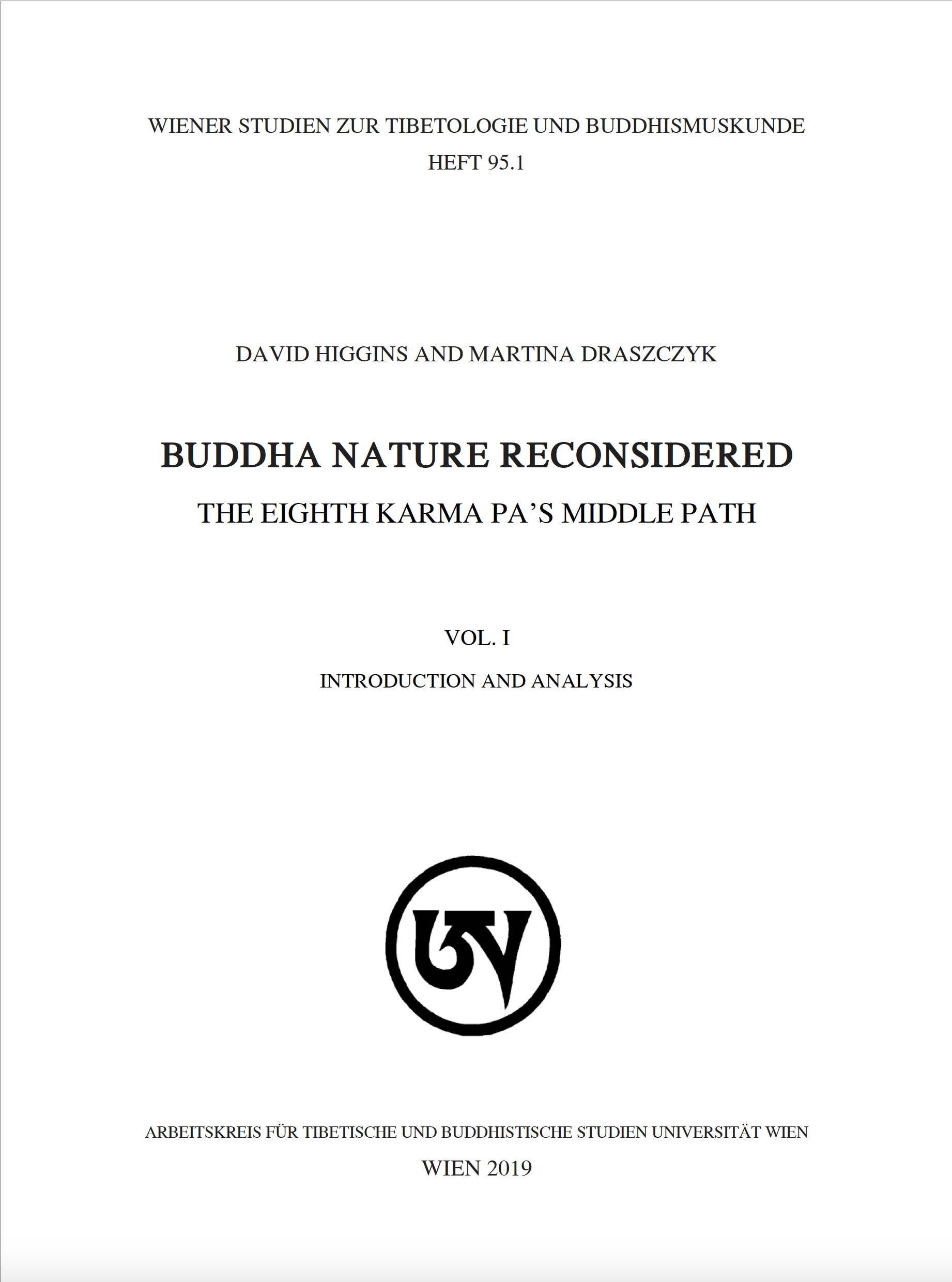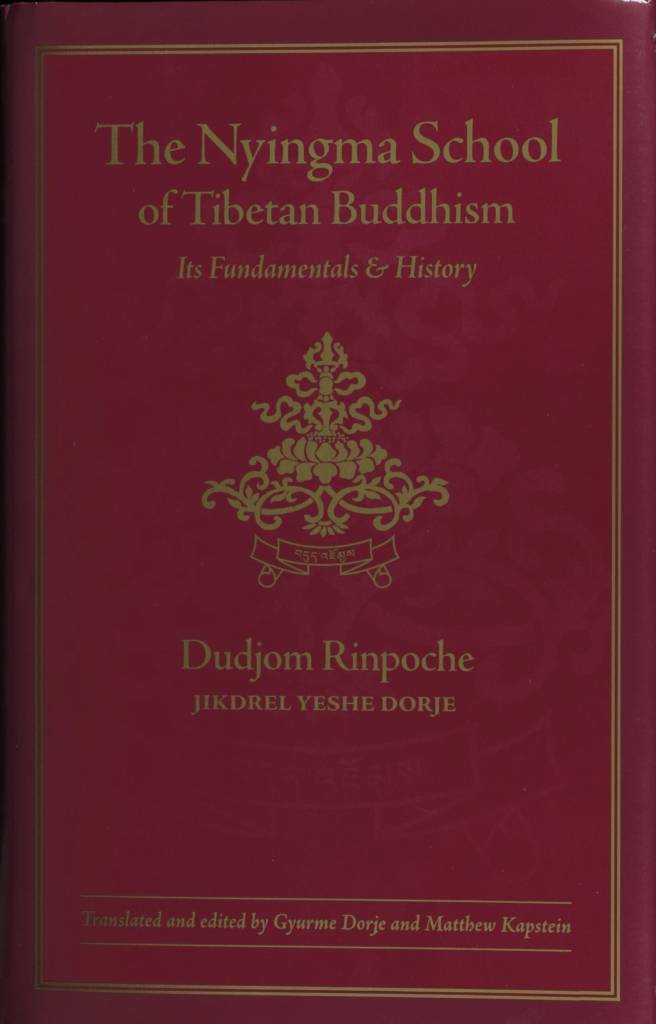Other-Emptiness and the Great Middle Way: Difference between revisions
No edit summary |
No edit summary |
||
| Line 43: | Line 43: | ||
:<em>Since adventitious, relative entities do not exist at all in reality, they are empty of their own essences; they are self-empty. The innate ultimate, which is the ultimate emptiness of these relative things, is never non-existent; therefore, it is other-empty. | :<em>Since adventitious, relative entities do not exist at all in reality, they are empty of their own essences; they are self-empty. The innate ultimate, which is the ultimate emptiness of these relative things, is never non-existent; therefore, it is other-empty. | ||
|Dölpopa Sherab Gyaltsen | |Dölpopa Sherab Gyaltsen. ''Collected Works'' ('Dzamthang ed., 1998), Vol. 6: 416.<br>-Translated by Douglas Duckworth in "''Onto-theology and Emptiness: The Nature of Buddha-Nature''." (2014), page 1075. | ||
|style=max-width: none; | |||
}} | |||
{{CommentatorSeparator|Tāranātha}} | |||
{{Blockquote | |||
|In his Essence of Other-Emptiness, Tāranātha states:</em> | |||
:དབུ་མ་ཆེན་པོ་ནི། བོད་དུ་གཞན་སྟོང་དུ་གྲགས་པ་རྣམ་རིག་གི་དབུ་མ་སྟེ། རྗེ་བཙུན་བྱམས་པའི་གཞུང་དང་། འཕགས་པ་ཐོགས་མེད་དང་།མཁས་མཆོག་དབྱིག་གཉེན་གྱིས་གསལ་པར་མཛད་ཅིང་། འཕགས་པ་ཀླུ་སྒྲུབ་ཀྱིས་ཆོས་དབྱིངས་བསྟོད་པར་ཡང་ཆེས་གསལ་བས། འཕགས་མཆོག་གཉིས་ཅར་གྱི་བཞེད་པ་གཞན་སྟོང་ཡིན་ནོ། | |||
:<em>In Tibet, the Great Madhyamaka is the Madhyamaka of discerning cognition and is known as "''zhentong''." This [system] was elucidated by the treatises of the majestic Maitreya, Asaṅga, the supreme scholar Vasubandhu, and was greatly clarified by Ārya Nāgārjuna’s ''Dharmadhātustava''. In fact, the proclamations of the two most supreme [Asaṅga and Nāgārjuna] is zhentong! | |||
|TA ra nA tha. gzhan stong snying po. In gsung 'bum/_tA ra nA tha(dpe bsdur ma). Pe cin: krung go'i bod rig pa dpe skrun khang, 2008: Vol. 36, p. 169.<br>-Translated by Michael Sheehy, ''Essence of Zhentong'' for the [https://jonangfoundation.org/sites/default/files/jf_snying%20po_final.pdf Jonang Foundation]. | |||
|style=max-width: none; | |style=max-width: none; | ||
}} | }} | ||
Revision as of 09:44, 14 August 2019
- Karl Brunnhölzl, When the Clouds Part, p. 1018, nt. 532.
Watch & Learn
In English with his direct, characteristic humor, Khenpo Rinpoche presents the "shining star" of buddha-nature in the minds of sentient beings as the same nature as the buddhas. He says, "We are always guided by this nature all the time whether we realize it or not."
Jonang
Dölpopa Sherab Gyaltsen
As a basic definition, Dölpopa states:
- དེ་ལ་ཀུན་རྫོབ་གློ་བུར་བའི་དངོས་པོ་རྣམས་ནི་གནས་ལུགས་ལ་གཏན་ནས་མེད་པའི་ཕྱིར་རང་གི་ངོ་བོས་སྟོང་སྟེ་དེ་ནི་རང་སྟོང་ངོ་། ཀུན་རྫོབ་དེ་རྣམས་ཀྱིས་སྟོང་པའི་དོན་དམ་སྟོང་པའི་དོན་དམ་གཉུག་མ་ནི་ནམ་ལང་མེད་པ་མ་ཡིན་པའི་ཕྱིར་གཞན་སྟོང་ངོ་།
- Since adventitious, relative entities do not exist at all in reality, they are empty of their own essences; they are self-empty. The innate ultimate, which is the ultimate emptiness of these relative things, is never non-existent; therefore, it is other-empty.
~ Dölpopa Sherab Gyaltsen. Collected Works ('Dzamthang ed., 1998), Vol. 6: 416.
-Translated by Douglas Duckworth in "Onto-theology and Emptiness: The Nature of Buddha-Nature." (2014), page 1075.
Tāranātha
In his Essence of Other-Emptiness, Tāranātha states:
- དབུ་མ་ཆེན་པོ་ནི། བོད་དུ་གཞན་སྟོང་དུ་གྲགས་པ་རྣམ་རིག་གི་དབུ་མ་སྟེ། རྗེ་བཙུན་བྱམས་པའི་གཞུང་དང་། འཕགས་པ་ཐོགས་མེད་དང་།མཁས་མཆོག་དབྱིག་གཉེན་གྱིས་གསལ་པར་མཛད་ཅིང་། འཕགས་པ་ཀླུ་སྒྲུབ་ཀྱིས་ཆོས་དབྱིངས་བསྟོད་པར་ཡང་ཆེས་གསལ་བས། འཕགས་མཆོག་གཉིས་ཅར་གྱི་བཞེད་པ་གཞན་སྟོང་ཡིན་ནོ།
- In Tibet, the Great Madhyamaka is the Madhyamaka of discerning cognition and is known as "zhentong." This [system] was elucidated by the treatises of the majestic Maitreya, Asaṅga, the supreme scholar Vasubandhu, and was greatly clarified by Ārya Nāgārjuna’s Dharmadhātustava. In fact, the proclamations of the two most supreme [Asaṅga and Nāgārjuna] is zhentong!
~ TA ra nA tha. gzhan stong snying po. In gsung 'bum/_tA ra nA tha(dpe bsdur ma). Pe cin: krung go'i bod rig pa dpe skrun khang, 2008: Vol. 36, p. 169.
-Translated by Michael Sheehy, Essence of Zhentong for the Jonang Foundation.
Kagyu
Third Karmapa Rangjung Dorje
In his The Treatise on Pointing Out the Tathāgata Heart, the Third Karmapa states:
- །ཐ་མལ་ཤེས་པ་དེ་ཉིད་ལ།
།ཆོས་དབྱིངས་རྒྱལ་བའི་སྙིང་པོ་ཟེར།
།བཟང་དུ་འཕགས་པས་བཏང་བ་མེད།
།ངན་དུ་སེམས་ཅན་གྱིས་མ་བཏང་།
།ཐ་སྙད་དུ་མ་བརྗོད་མོད་ཀྱང།
།རྗོད་པས་དེ་ཡི་དོན་མི་ཤེས།- Just this ordinary mind
Is called "dharmadhātu" and "Heart of the victors."
It is neither to be improved by the noble ones
Nor made worse by sentient beings.
It may no doubt be expressed through many conventional terms,
But its actual reality is not understood through expressions.~ rang byung rdo rje, (Karmapa, 3rd). de bzhin gshegs pa'i snying po bstan pa'i bstan bcos. In gsung 'bum rang byung rdo rje. Zi ling: mtshur phu mkhan po lo yag bkra shis, 2006: Vol. 7, p. 285.
-Translation from Karmapa, The Third, Rang byung rdo rje. Luminous Heart: The Third Karmapa on Consciousness, Wisdom, and Buddha Nature. Translated by Karl Brunnhölzl. Nitartha Institute Series. Ithaca, NY: Snow Lion Publications, 2009: pp. 354-355.
Sakya
Śākya Chokden
In his Undermining the Haughtiness of Others by the Wheel of Brahma: A Treatise Clarifying Mahāmudrā Śākya Chokden states:
- དཔེར་མཚོན་ན། །འཁོར་ལོ་བར་པ་ཆོས་མམས་ཀུན། །རང་སྟོང་ཉིད་དུ་བཤད་འོག་ཏུ། །འཁོར་ལོ་གསུམ་པར་དེས་སྟོང་པའི། །འགྱུར་བ་མེད་པའི་ཡོངས་གྲུབ་ཉིད། །ངེས་པའི་དོན་དུ་བཤད་དེ་བཞིན། །གཞན་ཡང་ཆུ་ཤིང་སྙིང་པོ་ནི། །རྩལ་བས་མ་མྱེད་གྱུར་མོད་ཀྱང་། །ལོ་འདབ་རྒྱས་པའི་དབུས་ཞིག་ཏུ། །འབྲས་བུ་མངར་པོར་སྨིན་དེ་བཞིན༎
- To illustrate with an example, [the Buddha]—after explaining in the middle dharmacakra that all phenomena are simply empty of own-nature—taught in the third dharmacakra that the unchanging perfect nature which is empty of that [self-emptiness] is the definitive meaning. Likewise, one doesn’t find any core of a banana plant when one searches for it, yet in the middle of the unfolded leaves [bananas] nonetheless ripen as sweet fruits.
~ shAkya mchog ldan. phyag rgya chen po gsal bar byed pa'i bstan bcos tshangs pa'i 'khor los gzhan blo'i dregs pa nyams byed. In gser mdog paN chen shAkya mchog ldan gyi gsung 'bum. rdzong sar: rdzong sar khams bye'i slob gling thub bstan dar rgyas gling, 2006-2007: Vol. 17, p. 368.
-Higgins, David and Martina Draszczyk. Mahāmudrā and the Middle Way: Post-Classical Kagyü Discourses on Mind, Emptiness and Buddha-Nature. Volume 2: Translations, Critical Texts, Bibliography and Index. Wiener Studien zur Tibetologie und Buddhismuskunde 90. Vienna: Arbeitskreis für Tibetische und Buddhistische Studien Universität Wien, 2016: p. 21.
Nyingma
Mipam Gyamtso
In his Trilogy of Innate Mind, Mipam states:
- གཤེགས་སྙིང་ནི་སྟོང་ཀྱང་ཙམ་མིན་ཏེ། སྟོང་ཉིད་འོད་གསལ་ཡིན།
དེ་ཆོས་ཐམས་ཅད་ཀྱི་ཡེ་ཐོག་གཞི་ཡི་གནས་ལུགས་ཡིན།
ཟུང་འཇུག་བདེན་པ་དབྱེར་མེད་ཀྱི་གནས་ལུགས་རྣམ་ཀུན་མཆོག་ལྡན་གྱི་སྟོང་ཉིད་ཡིན་ལ་- Buddha-nature is not a mere absence; it is emptiness and luminous clarity.
It is the abiding reality of the ground of the primeval beginning of all phenomena,
the abiding reality that is the indivisible truth of unity—emptiness endowed with all supreme aspects.~ Duckworth, Douglas S. Mipam on Buddha-Nature: The Ground of the Nyingma Tradition. Albany, NY: State University of New York Press, 2008: p. 105.
Further Readings
[When the Clouds Part]
In its chapter on how the Shentong tradition spread in India and Tibet, as mentioned above, the [Treasury of Knowledge] states that the intention of the sūtras of the third wheel of dharma was elucidated by the works of Maitreya except the Abhisamayālaṃkāra and by Nāgārjuna’s collection of praises.[1] In India, the meaning of these texts was explained and spread widely by Asaṅga, Vasubandhu, Candragomī, their followers, Ratnākaraśānti, and others. Dharmapāla (530-561) composed a treatise called Dawn of Brightness commenting on Nāgārjuna’s collection of reasoning as bearing the intention of the third wheel of dharma. However, while the general philosophical system of Maitreya as expressed in the Abhisamayālaṃkāra, Mahāyānasūtrālaṃkāra, and Madhyāntavibhāga was explained through many traditions (such as those of Dignāga and Sthiramati), the uncommon view of these texts was sustained in such a way that only the supreme disciples transmitted it orally, with the texts of the Dharmadharmatāvibhāga and Uttaratantra being hidden away as treasure texts until Maitrīpa rediscovered them. Via *Ānandakīrti and Sajjana, these texts were transmitted to Ngog Lotsāwa as well as Su Gawé Dorje and Dsen Kawoché.
[Mahāmudrā and the Middle Way]
This two-volume publication explores the complex philosophy of Mahāmudrā that developed in Tibetan Dwags po Bka’ brgyud traditions between the 15th and 16th centuries CE. It examines the attempts to articulate and defend Bka’ brgyud views and practices by four leading post-classical thinkers: (1) Shākya mchog ldan (1423‒1507), a celebrated yet controversial Sa skya scholar who developed a strong affiliation with the Karma Bka’ brgyud Mahāmudrā tradition in the last half of his life, (2) Karma phrin las Phyogs las rnam rgyal (1456‒1539), a renowned Karma Bka’ brgyud scholar-yogin and tutor to the Eighth Karma pa, (3) the Eighth Karma pa himself, Mi bskyod rdo rje (1507‒1554), who was among the most erudite and influential scholar-hierarchs of his generation, (4) and Padma dkar po (1527‒1592), Fourth ’Brug chen of the ’Brug pa Bka’ brgyud lineage who is generally acknowledged as its greatest scholar and systematizer.
[[|Book: Buddha Nature Reconsidered]]
As a Mahāmudrā proponent, Mi bskyod rdo rje gives primacy to innate modes of being and awareness, such as coemergent wisdom or buddha nature naturally endowed with qualities, that are amenable only to direct yogic perception and revealed through the personal guidance of a qualified teacher. As an exponent of yuganaddha (zung ’jug), i.e., unity (literally, “yoking together”), he espouses the tantric goal of unity beyond extremes, a goal grounded in the inseparability of the two truths or realities (bden gnyis dbyer med), of appearance and emptiness (snang stong dbyer med). In his eyes, this unity is only fully realized when one understands that the conventional has no independent existence apart from the ultimate and that the latter is a condition of possibility of the former. As an advocate of apratiṣṭhāna (rab tu mi gnas pa), i.e., nonfoundationalism, he resolutely maintains that all outer and inner phenomena, including deep features of reality disclosed through meditation, lack any ontic or epistemic essence or foundation that the mind can lay hold of. Finally, as a champion of Madhyamaka, i.e., the Buddhist Middle Way, the author attempts to ply a middle course between the extremes of existence and nonexistence, eternalism and nihilism. These various doxographical strands are deftly interwoven in the Karma pa’s view of buddha nature, which affirms the innate presence of buddha nature and its qualities in all sentient beings as well as their soteriological efficacy while denying either any ontological status.
[The Nyingma School of Tibetan Buddhism]
Concerning the subtle, inner Great Madhyamaka of definitive meaning, it is stated in the Jewel Lamp of the Madhyamaka by the master Bhavya (skal-ldan):
The Madhyamaka of the Prāsaṅgika and the Svātantrika is the coarse, Outer Madhyamaka. It should indeed be expressed by those who profess well-informed intelligence during debates with [extremist] Outsiders, during the composition of great treatises, and while establishing texts which concern supreme reasoning. However, when the subtle, inner Madhyamaka is experientially cultivated, one should meditate on the nature of Yogācāra-Madhyamaka.
In this way, two Madhyamaka are spoken of, one outer and coarse, the other inner and subtle.
Concerning the latter, the regent Ajita [Maitreya] has extensively analysed the meaningful intention of the topics of vast significance which revealed all things in terms of the three essential natures. This he did by means of discourses connected with the irreversible intention of the final turning of the doctrinal wheel and with the utter purity of the three spheres [of subject, object and their interaction].




